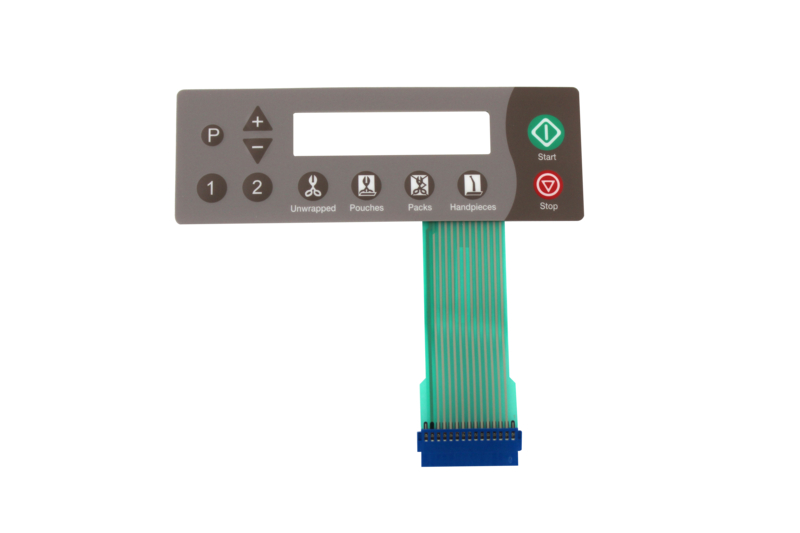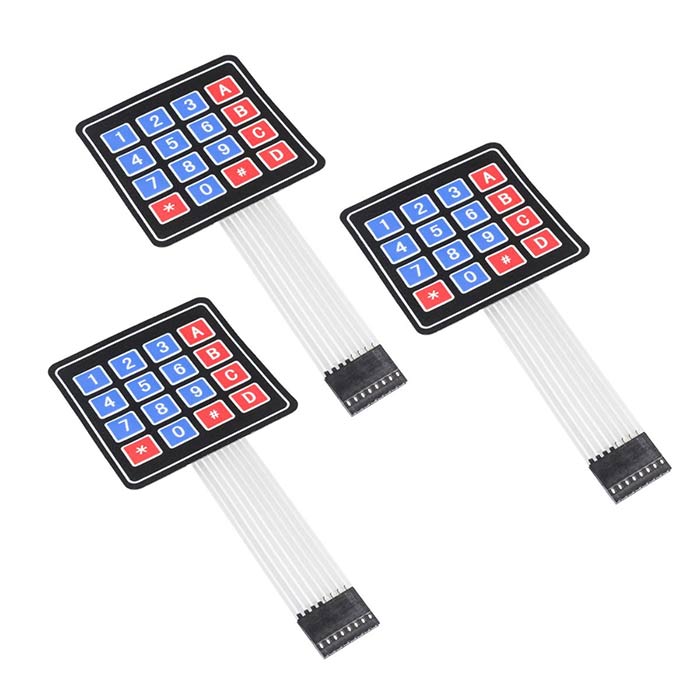Everything About Membrane Switch Over: Recognizing Its Layout and Performance
When you believe concerning the control interfaces in contemporary tools, membrane switches typically come to mind. These components are extra than just switches; they blend style and capability perfectly. Recognizing just how they function and what makes them efficient can transform your perspective on everyday electronic devices. But, there are subtleties to their design and efficiency that you may not be aware of. Let's explore what collections membrane layer changes apart from various other control systems.
What Are Membrane Layer Buttons?

Their seamless nature makes them simple to clean and resistant to dirt and dampness, an essential function in several settings. Membrane buttons can additionally be tailored regarding shape, size, and graphics, allowing suppliers to produce unique user interfaces tailored to particular products. And also, they're lightweight and slim, which aids in reducing the total bulk of devices. Generally, membrane buttons play a substantial role in enhancing individual experience across a vast range of applications.
How Membrane Layer Switches Over Job
When you press a key on a membrane layer switch, it turns on an uncomplicated yet efficient mechanism. The top layer, often made of versatile product, lowers onto a conductive layer beneath it. This action bridges the gap in between conductive traces, completing an electrical circuit. As quickly as the circuit closes, it sends a signal to the gadget's controller, which interprets your input.
You'll discover that the responsive feedback differs based on the switch style, using either a soft click or an extra noticable response. When you launch the key, the membrane go back to its original placement, resuming the circuit and stopping the signal. This procedure takes place practically immediately, making certain a responsive individual experience.
Membrane buttons are preferred due to their sturdiness and resistance to dirt and moisture, making them perfect for numerous applications, from home devices to clinical gadgets. Understanding this procedure assists you appreciate their extensive usage.
Key Components of Membrane Buttons
Understanding the crucial parts of membrane switches is basic for understanding their performance and layout. The safety layer guards versus environmental factors and use, extending the switch's life-span. By understanding these components, you'll gain understanding right into just how membrane layer switches run and their relevance in various applications.
Materials Used in Membrane Switch Layout
The performance and resilience of membrane switches greatly depend upon the materials made use of in their layout. You usually encounter polyester and polycarbonate as primary substrates as a result of their exceptional strength and versatility. These products stand up to scratches and chemicals, making them ideal for demanding settings.
The conductive layers often utilize silver or carbon, selected for their reliability and conductivity. membrane switch manufacturer. Silver supplies superior performance, while carbon is a cost-efficient option. For the overlay, you may think about a matte or shiny finish, depending on your visual demands and user experience
Make particular to select adhesives that withstand environmental factors like temperature and moisture. Choosing the ideal products will certainly assure your membrane layer switch stands the examination of time.
Layout Considerations for Membrane Layer Buttons
While developing membrane layer buttons, it's vital to take right into account different elements that affect their functionality and customer experience. Begin by concentrating on the design and button size; make specific they're instinctive and very easy to browse.
Do not ignore the visuals design; clear labeling and color comparison are substantial for presence. Confirm your style fits environmental factors, like dampness or temperature variants, which can influence performance. Keep in mind the importance of testing models with real customers to collect feedback and make essential changes. This iterative process helps you refine the layout, verifying it meets both practical and visual needs efficiently. By very carefully thinking about these elements, you'll create a membrane switch that improves functionality and complete satisfaction.
Applications of Membrane Layer Buttons
Membrane layer switches are versatile elements found in numerous applications, from industrial equipment to consumer electronics. You'll see their influence in equipments that call for long lasting interfaces and in devices that gain from smooth layouts. Understanding these applications aids you value the capability and usefulness of membrane buttons in day-to-day technology.
Industrial Tools Use
When you're looking to boost the capability of industrial tools, membrane buttons use a trustworthy solution that combines longevity with straightforward layout. These buttons are excellent for severe atmospheres, giving resistance to dust, dampness, and chemicals. You'll locate them in control panels for producing machines, heating and cooling systems, and clinical devices, where accuracy and responsiveness are essential. Their reduced profile implies they fit flawlessly into various equipment, saving valuable space while keeping simplicity of use. With customizable graphics and backlighting choices, you can create an instinctive user interface for drivers, improving effectiveness and safety. And also, their lengthy lifespan reduces upkeep prices, making them a smart financial investment for your commercial applications. Welcome membrane layer switches to enhance your procedures and improve overall performance.
Consumer Electronics Integration
In the domain of customer electronics, membrane layer buttons play an important role in enhancing customer interaction and tool capability. You'll discover them in gadgets like microwaves, remote controls, and gaming consoles, supplying a seamless method to interact with technology. Their sleek style enables for easy assimilation into different products, making controls instinctive and user-friendly. With their capability to integrate graphics and backlighting, you can enjoy a contemporary aesthetic that matches the tool's overall look. Membrane buttons also guarantee longevity and resistance to dirt and dampness, expanding the life-span of your electronic devices. By choosing membrane switches, you enhance not simply the capability yet also the style of your gadgets, making day-to-day interactions smooth and enjoyable.
Advantages and Negative Aspects of Membrane Switches
While membrane buttons offer a variety of benefits, they likewise include useful source some drawbacks that you need to consider. One substantial advantage is their portable layout, making them optimal useful site for space-constrained applications. They're also affordable, providing a resilient solution with a reduced manufacturing expense. In addition, their seamless surface is simple to tidy, improving health in atmospheres like healthcare facilities.

Membrane switches can have a shorter life-span contrasted to mechanical buttons, particularly under hefty use. They can additionally be less tactile, which might impact individual feedback during operation. Balancing these pros and cons will certainly aid you figure out if membrane layer buttons are the appropriate fit for your project.
Often Asked Concerns
The Length Of Time Do Membrane Layer Switches Over Typically Last?
Membrane layer changes usually last in between 5 to ten years, depending on usage and ecological problems. You'll intend to examine elements like wear, exposure to wetness, and temperature changes to assess their long life effectively.
Can Membrane Layer Switches Over Be Customized for Certain Layouts?
Yes, you can customize membrane layer switches to fit specific designs (membrane switch manufacturer). You'll have the freedom to select colors, forms, and layouts that match your task's needs, guaranteeing they blend flawlessly with your total aesthetic
What Is the Expense Range for Membrane Layer Change Production?
The cost variety for membrane layer button production generally falls in between $1 and $10 each, relying on variables like style complexity, amount, and products. You can get quotes from producers to locate the very best option.

Are Membrane Layer Changes Water Resistant or Immune?
Membrane layer buttons can be developed to be water-proof or resistant, relying on materials utilized and building and construction techniques. If you need them for wet more helpful hints settings, guarantee you define those requirements throughout the design procedure.
How Do Membrane Layer Switches Contrast to Traditional Switches?
Membrane layer buttons are generally thinner and much more versatile than typical switches, using a sleek design. They're frequently much easier to clean and incorporate, but could not give the responsive comments you're used to with mechanical options.
Final thought
